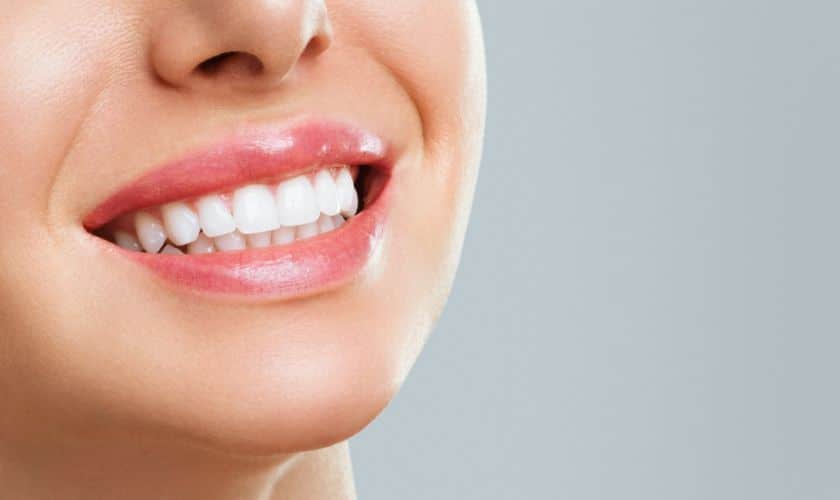Request Appointment
The Science Behind Teeth Whitening: How It Works

The Science Behind Teeth Whitening: How It Works
A bright, dazzling smile is often associated with confidence and good oral hygiene. However, maintaining pearly white teeth can be a challenge, especially with constant exposure to staining agents like coffee, tea, and certain foods. Fortunately, advancements in dentistry have made teeth whitening procedures more accessible and effective than ever before. In this blog, we’ll delve into the science behind teeth whitening, shedding light on how these treatments work to enhance your smile.
The Anatomy Of Tooth Discoloration
Before diving into the intricacies of teeth whitening procedures, it’s essential to understand why teeth become discolored in the first place. The outer layer of our teeth, known as enamel, is composed of tightly packed mineral crystals. Over time, however, the enamel can become stained or discolored due to various factors:
- Extrinsic Stains: These stains occur on the surface of the teeth and are typically caused by the consumption of dark-colored foods and beverages, tobacco use, and inadequate oral hygiene practices.
- Intrinsic Stains: Intrinsic discoloration occurs within the tooth structure itself, often as a result of aging, certain medications, or excessive fluoride exposure during tooth development.
How Teeth Whitening Works
Teeth whitening treatments aim to reverse the effects of staining and discoloration, restoring the teeth to their natural shade of white. There are primarily two types of teeth whitening procedures: in-office treatments performed by dental professionals and at-home kits prescribed by dentists.
In-Office Teeth Whitening
In-office teeth whitening procedures, also known as chairside or professional whitening, involve the application of a bleaching agent directly to the teeth. The most commonly used bleaching agent is hydrogen peroxide or carbamide peroxide, which penetrates the enamel to break down stains and discoloration molecules.
During an in-office whitening session, the dentist will first protect the gums and soft tissues with a barrier to prevent irritation. Then, a highly concentrated bleaching gel is applied to the teeth and activated using a special light or laser. The light accelerates the whitening process by enhancing the penetration of the bleaching agent into the enamel, resulting in visibly whiter teeth in just one visit.
At-Home Teeth Whitening Kits
At-home teeth whitening kits, on the other hand, typically consist of custom-fitted trays and a bleaching gel containing a lower concentration of hydrogen peroxide. Dentists prescribe these kits and provide patients with the flexibility to whiten their teeth at their convenience.
To use an at-home whitening kit, patients fill the trays with the prescribed amount of bleaching gel and wear them over their teeth for a specified period, usually a few hours each day or overnight. While at-home kits may take longer to achieve noticeable results compared to in-office treatments, they can still effectively lighten mild to moderate tooth discoloration over time.
The Science Behind Teeth Whitening: Breaking Down Stains
Now that we understand the basics of teeth whitening procedures let’s take a closer look at the science behind how these treatments work. At the molecular level, the active ingredients in bleaching agents, such as hydrogen peroxide, penetrate the enamel and react with the molecules responsible for staining.
Stains and discoloration on the teeth occur when chromogens, pigmented molecules found in various foods and beverages, become trapped within the microscopic pores of the enamel. The hydrogen peroxide in whitening agents acts as an oxidizing agent, breaking down these chromogens into smaller, less pigmented molecules. As a result, the stains are effectively lightened, and the overall appearance of the teeth is brightened.
Potential Side Effects And Considerations
While teeth whitening procedures are generally safe and well-tolerated, it’s essential to be aware of potential side effects and considerations. Some individuals may experience temporary tooth sensitivity or gum irritation following whitening treatments, which typically subside within a few days.
Additionally, teeth whitening may only be suitable for some, particularly those with extensive dental restorations, such as fillings, crowns, or veneers. In such cases, alternative cosmetic dental procedures may be recommended to achieve the desired aesthetic results.
Maintaining Results
To prolong the results of teeth whitening treatments, it’s crucial to practice good oral hygiene habits and minimize exposure to staining agents. Regular brushing and flossing, along with routine dental cleanings, can help prevent the buildup of plaque and surface stains.
Moreover, limiting consumption of dark-colored beverages like coffee, tea, and red wine, as well as avoiding tobacco products, can help preserve the brightness of your smile. In cases where touch-up treatments are necessary, consult with your dentist to determine the most appropriate course of action.
Enhancing Your Smile With Teeth Whitening
Teeth whitening procedures offer a safe and effective way to brighten your smile and boost your confidence. Whether you opt for an in-office treatment or an at-home whitening kit prescribed by your dentist, understanding the science behind these procedures can help you make informed decisions about your oral health.
If you’re considering teeth whitening in Roseville, CA, schedule a consultation with a trusted dentist location to discuss your options and determine the best approach for achieving your desired results. A brighter, whiter smile awaits!
By incorporating the latest advancements in dental technology and expertise, dentists can help you achieve the smile of your dreams. Say goodbye to stubborn stains and hello to a radiant, confident smile with professional teeth whitening treatments tailored to your needs.

